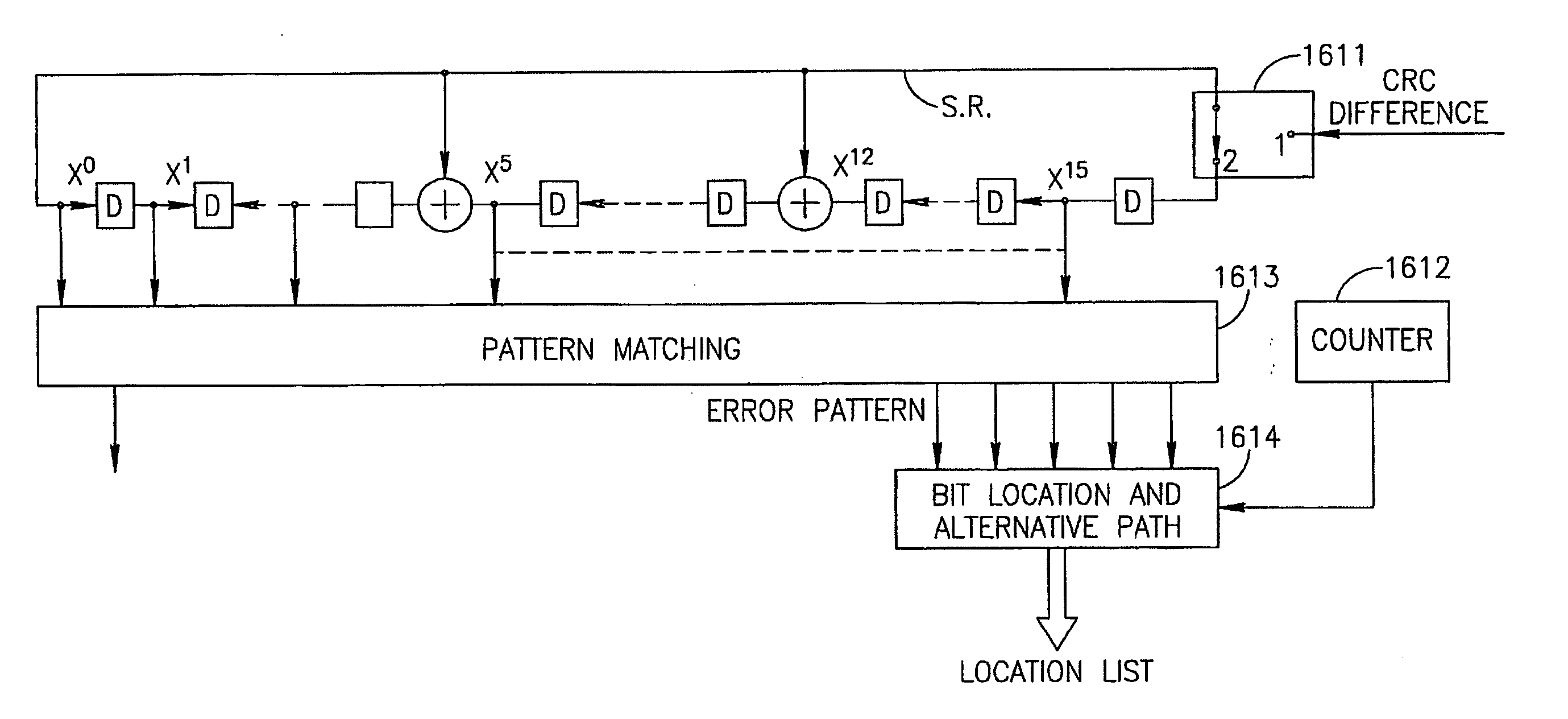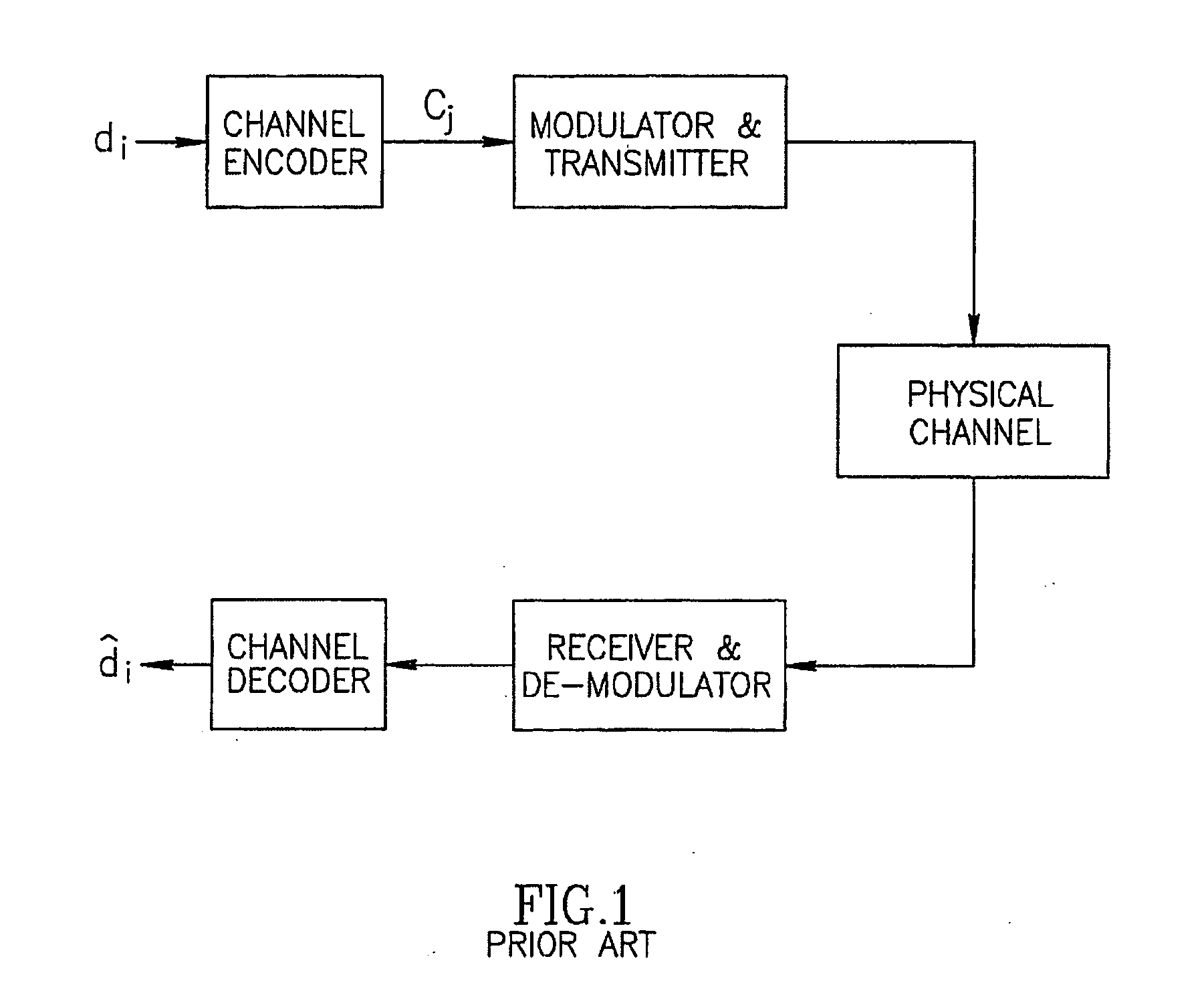Iterative decoding process
a decoding and process technology, applied in the field of iterative decoding process, can solve the problems of extremely sensitive files and small increase in error probability, and achieve the effect of reducing the average number of iterations
- Summary
- Abstract
- Description
- Claims
- Application Information
AI Technical Summary
Benefits of technology
Problems solved by technology
Method used
Image
Examples
Embodiment Construction
[0052] Briefly, the present invention decreases the average number of iterations by utilizing a reliability metric produced during an iteration step as a criterion in an abort decision with respect to further iterations. Optionally, the reliability metric produced during one iteration may be used for correcting some of the decoding errors.
[0053] The method is described below particularly for decoding of parallel code concatenation (PCC), but is also applicable for decoding of serial code concatenation (SCC) by introducing minor modifications as will be described below.
[0054] Reference is now made to FIG. 8 which illustrates a flow diagram of a decoding process in accordance with the present invention.
[0055] The first stage is to decode the 1st sub-code (block 1a) followed by a CRC-aided error detection process (block 2a). A possible recommended optimization (block 3a) is to activate this stage only if a predetermined criterion is satisfied; for example the criterion could be a mi...
PUM
 Login to View More
Login to View More Abstract
Description
Claims
Application Information
 Login to View More
Login to View More - R&D
- Intellectual Property
- Life Sciences
- Materials
- Tech Scout
- Unparalleled Data Quality
- Higher Quality Content
- 60% Fewer Hallucinations
Browse by: Latest US Patents, China's latest patents, Technical Efficacy Thesaurus, Application Domain, Technology Topic, Popular Technical Reports.
© 2025 PatSnap. All rights reserved.Legal|Privacy policy|Modern Slavery Act Transparency Statement|Sitemap|About US| Contact US: help@patsnap.com



